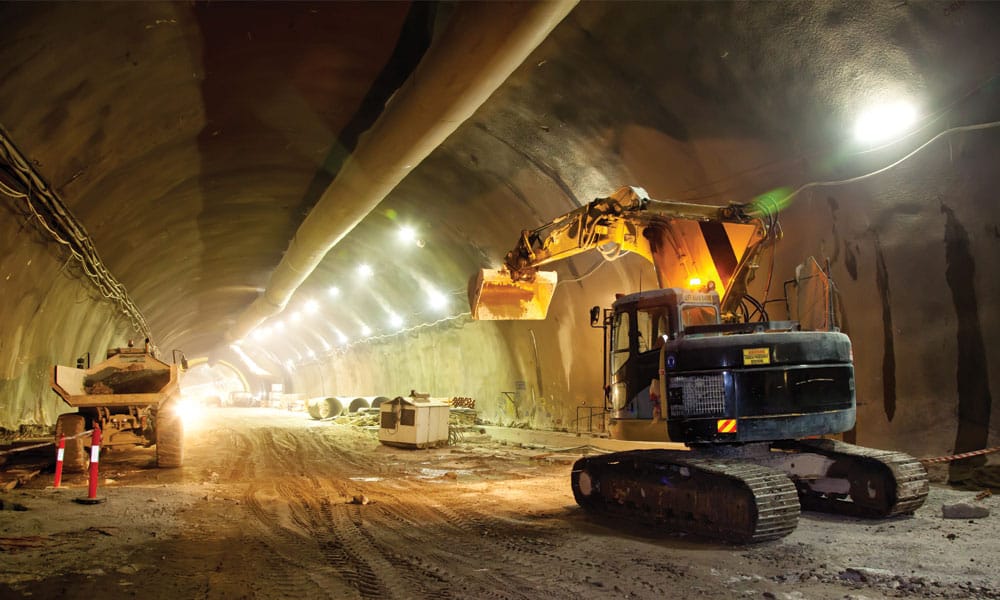Geotheta: A Comprehensive Guide to Its Duty in Geotechnical Evaluations
Geotheta: A Comprehensive Guide to Its Duty in Geotechnical Evaluations
Blog Article
Browsing Geotechnical Providers: The Significance of Geotechnical News, Dirt Compaction Screening, and Pavement Design in Ensuring Structural Honesty
In the world of design and building, the structure upon which a framework is developed plays a pivotal function in its longevity and safety. Geotechnical services, including the manufacturing of geotechnical records, conducting dirt compaction testing, and meticulous pavement layout, function as the foundation of guaranteeing structural honesty. These essential elements not only lay the groundwork for effective project execution yet additionally minimize potential threats that could compromise the stability and toughness of a construction task. As we look into the complex interplay in between geotechnical analysis and structural strength, the important nature of these services in protecting versus unpredicted difficulties comes to be significantly apparent.
Relevance of Geotechnical Records
Geotechnical reports play a vital role in supplying detailed insights into the soil and rock problems of a website, important for making certain the structural stability of building projects. These reports are a basic part of the initial website examination process, using important info that influences the design, construction approaches, and general usefulness of a project. By assessing dirt structure, stability, and potential threats such as landslides or sinkholes, geotechnical records allow designers to make educated choices pertaining to foundation design and building and construction techniques.
Furthermore, geotechnical records help in danger assessment and mitigation strategies, assisting job stakeholders understand the potential obstacles that might arise during construction. With extensive exam and interpretation of geotechnical information, designers can develop options to resolve site-specific issues, making sure the long-term security and safety and security of the framework. Ultimately, the extensive nature of geotechnical records serves as a critical foundation for successful task planning and execution, decreasing risks and improving total project end results.

Role of Soil Compaction Screening
Just how crucial is the assessment of dirt compaction via screening for making sure the security and durability of construction tasks? Dirt compaction testing plays an important function in the construction industry by making sure that the soil underneath a framework is properly compressed to avoid and sustain the desired load negotiation (geotheta). Effectively compacted dirt provides a stable foundation for buildings, roadways, and various other structures, decreasing the danger of structural failure and pricey repairs in the future
Soil compaction screening involves measuring the density of the soil and contrasting it to the maximum density attainable for that certain soil type. This aids designers figure out if the soil has actually been compressed completely to support the scheduled structure. By performing soil compaction examinations during building, designers can identify any type of areas that need additional compaction and take rehabilitative steps prior to proceeding with more building.
Relevance of Sidewalk Layout
Evaluating dirt compaction through screening not only makes certain the security and longevity of construction tasks yet additionally lays an important foundation for efficient sidewalk design. Sidewalk design is an essential aspect of building and construction projects as it directly influences the sturdiness and performance of roads, car park, and various other structures subjected to automobile or foot web traffic. Appropriate pavement layout thinks about aspects such as web traffic load, environmental problems, soil qualities, and material properties to develop a sustainable and durable surface area. By including data from dirt compaction examinations, designers can identify the proper thickness, products, and layering for the pavement to hold up against expected read here anxieties and maintain structural integrity with time. Additionally, sidewalk style affects water drainage patterns, surface area rubbing, and general security for users. With precise planning and analysis, geotechnical designers can optimize sidewalk designs to fulfill particular project requirements, making sure smooth transportation courses and minimizing upkeep expenses over time.
Making Certain Structural Integrity
These records supply essential details on soil structure, stability, and potential risks, assisting in educated decision-making during the layout and building stages. Additionally, performing comprehensive dirt compaction testing is critical to make certain that the dirt under structures or pavements is appropriately compacted to sustain the intended lots and protect against negotiation problems.
Furthermore, carrying out robust pavement style methods is crucial for making certain the architectural integrity of roads, car parking great deals, and other smooth surfaces. Appropriate sidewalk layout takes into consideration variables such as web traffic volume, ecological problems, and soil qualities to develop risk-free and long lasting transportation framework. By sticking to these practices and utilizing geotechnical solutions properly, construction jobs can improve their structural stability, reduce risks of failure, and make sure the long-lasting efficiency of the developed setting.
Securing Versus Risks
In light of the important relevance placed on ensuring structural stability through careful focus to material option and dirt screening, protecting against dangers becomes paramount in keeping the stability and long life of construction tasks. Dangers in building and construction jobs can stem from numerous sources, consisting of all-natural catastrophes, soil instability, or layout imperfections.
Moreover, creating contingency plans and implementing robust tracking systems can help reduce unexpected risks that may arise throughout building. Routine inspections and high quality control actions should be accomplished to make sure that materials are used in accordance with requirements which this website building and construction techniques abide by market requirements. By proactively identifying and resolving prospective risks, construction tasks can boost their resilience and lessen the possibility of architectural failings, ultimately ensuring the safety and security and durability of the developed setting.
Conclusion

Soil compaction testing plays a crucial duty in the construction industry by ensuring that the soil underneath a framework you can try here is effectively compacted to prevent and sustain the desired lots negotiation.Dirt compaction screening entails measuring the density of the soil and contrasting it to the optimum density achievable for that specific dirt type (geotheta). By carrying out dirt compaction tests during construction, engineers can determine any kind of areas that require extra compaction and take rehabilitative actions prior to proceeding with further construction
Furthermore, conducting detailed dirt compaction screening is essential to make certain that the soil under structures or sidewalks is properly compacted to sustain the desired tons and avoid settlement problems.
In conclusion, geotechnical records, dirt compaction screening, and pavement style play crucial duties in ensuring the structural honesty of building projects.
Report this page